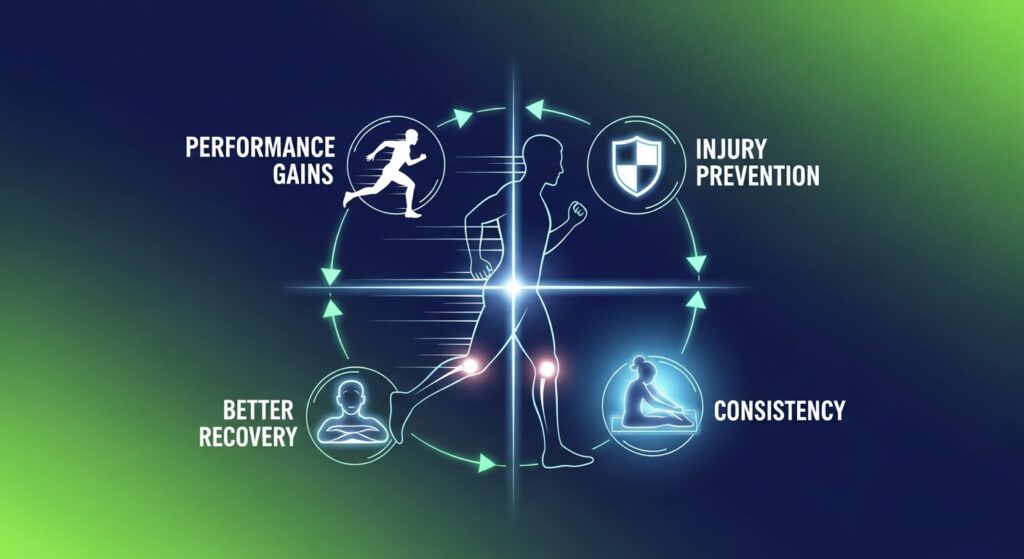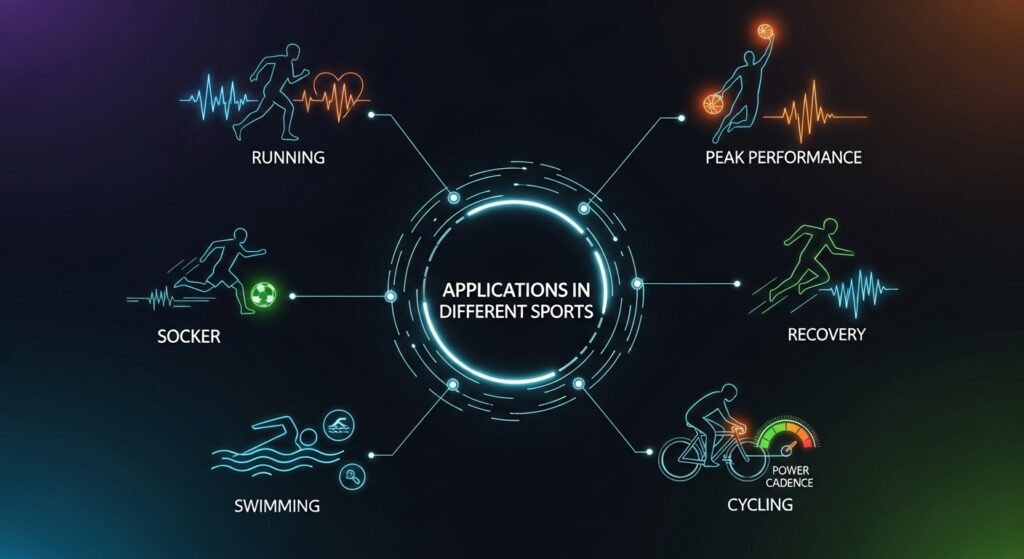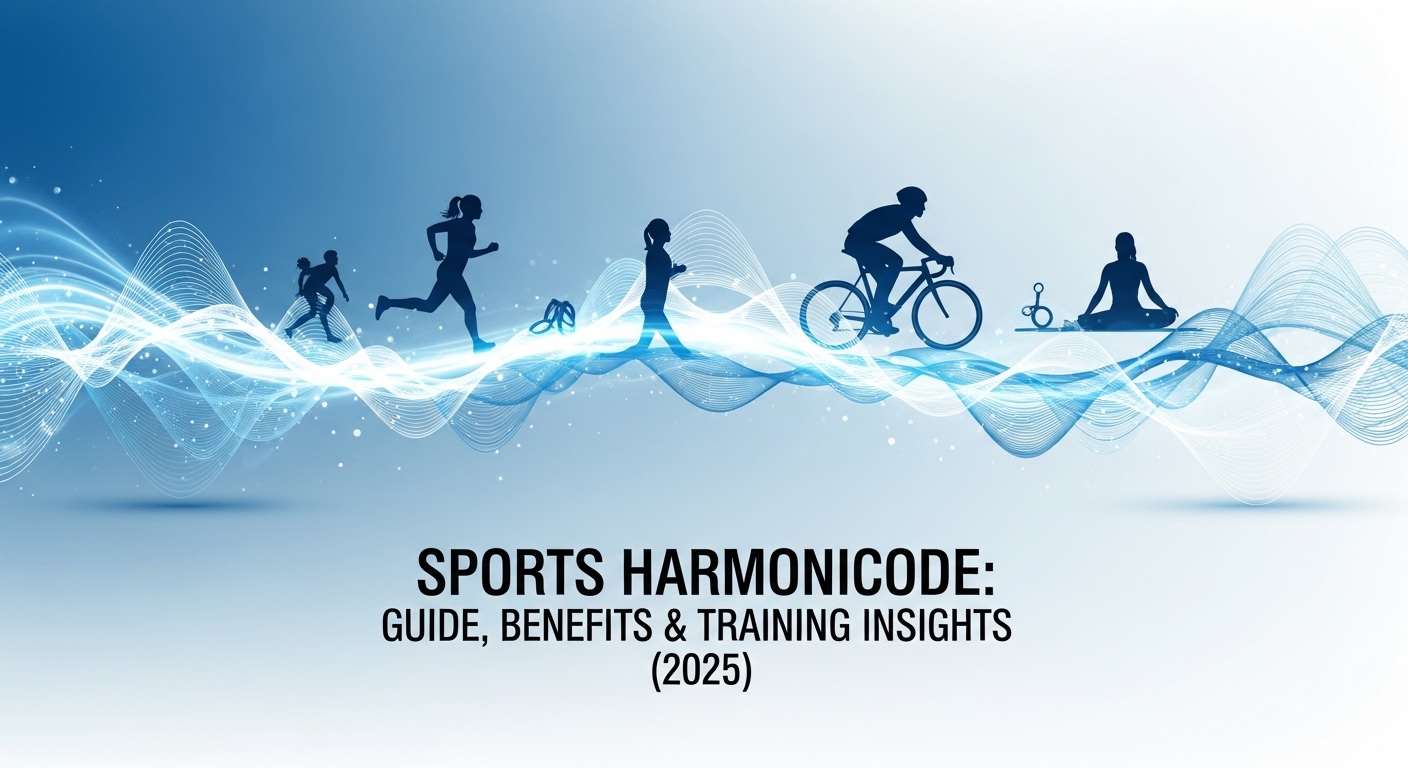Sports today are not just about power or speed. They are about timing, flow, and rhythm. Every sprint, jump, or throw has a hidden pattern. This pattern is often called the sports harmonicode. Many athletes and coaches overlook it, but those who study it can boost performance, prevent injuries, and train smarter.
In this guide, we’ll explore what this concept means, how it works in training, and why it can change the future of athletics.
What is Sports Harmonicode?
The sports harmonicode is the rhythm behind athletic moves. Think of it like music: every action has a beat, peak, and rest. When you line up your workouts with these natural waves, training feels smoother.
- A warm-up is like the intro of a song.
- High intensity is the chorus.
- Cool-down is the outro.
By following this hidden rhythm, athletes can avoid burnout, stay consistent, and improve results.
Why It Matters

Ignoring this code often leads to overtraining, injuries, or poor performance. Using it, however, helps in:
- Performance gains – stronger speed, power, and endurance.
- Injury prevention – avoiding stress overload.
- Better recovery – knowing when to rest and when to push.
- Consistency – building training that feels natural.
Core Principles of Harmonicode in Sports
Here are the main ideas behind it:
| Principle | Meaning | Example in Sports |
|---|---|---|
| Rhythm | Every move follows timing | A runner’s stride cycle |
| Peaks & Valleys | High and low energy points | Interval training |
| Balance | Push and rest in harmony | Strength + recovery days |
| Adaptation | Adjusting cycles to body response | Tapering before races |
Designing Training Cycles with Harmonicode
Training with this method means planning in phases:
- Micro cycle – Days to 1 week (mix light and hard days).
- Meso cycle – 2–6 weeks (focus on one quality like speed).
- Macro cycle – Months (build up for a big event or season).
Sample 8-Week Plan:
| Weeks | Focus | Notes |
|---|---|---|
| 1–2 | Light base workouts | Build rhythm |
| 3–4 | Speed & agility drills | Push intensity |
| 5 | Active recovery | Keep balance |
| 6–7 | Strength training | Focus on power |
| 8 | Peak performance | Ready for event |
Tools to Track Harmonic Patterns
To apply harmonicode, athletes need feedback. Some free and simple tools include:
- Smartwatches → track heart rate and timing.
- GPS apps → measure speed, distance, and rhythm.
- Wearable sensors → capture stride frequency or jumps.
- Spreadsheets → log and chart performance.
Tip: Review your data every 2 weeks. Look for highs, lows, and patterns.
You may also like: Ed Sheeran Details the Lovestruck Jitters in Sweet New Single
Mental and Emotional Flow
Sports are not only physical. The mind follows cycles too. Stress, focus, and motivation all rise and fall.
- Do a mental check-in before sessions (rate mood 1–10).
- Use visualization to picture moves before practice.
- Replace negative thoughts with short cues like steady or strong.
When body and mind are in sync, performance becomes more stable.
Team Dynamics and Harmonicode
This method isn’t just for solo athletes. Teams can use it too.
- Map each player’s peak energy times.
- Plan drills when most players are fresh.
- Rotate players to match recovery needs.
Comparison:
| Aspect | Individual | Team |
|---|---|---|
| Rhythm | Personal logs | Shared logs |
| Peaks | Session timing | Group drills |
| Recovery | Solo rest | Player rotation |
A team that aligns rhythms often plays with better flow and fewer injuries.
Pros and Cons of Sports Harmonicode
✅ Pros
- Boosts performance naturally.
- Reduces risk of injuries.
- Works for both solo and team sports.
- Easy to apply with basic tools.
- Improves mental focus.
❌ Cons
- Needs consistent tracking.
- May feel complex at first.
- Hard to measure without data tools.
- Requires patience to see results.
Comparing With Other Training Methods
| Method | Focus | Weakness |
|---|---|---|
| Traditional Training | Reps, sets, intensity | Often ignores rhythm |
| Sports Harmonicode | Timing, rhythm, recovery | Needs data tracking |
| Periodization | Planned cycles | Less flexible |
Harmonicode blends well with periodization but adds the missing piece—flow and rhythm.
Applications in Different Sports

- Running: Stride frequency, rest cycles.
- Basketball: Aligning player peaks for big games.
- Soccer: Energy tracking during matches.
- Swimming: Stroke rhythm and recovery phases.
- Cycling: Power output aligned with cadence.
Future of Sports Harmonicode
Technology will shape how this method grows. Wearables, AI, and predictive tools will soon give athletes real-time rhythm feedback. Coaches may design live training plans that adapt to an athlete’s harmonic flow.
Common Mistakes to Avoid
- Ignoring recovery days.
- Tracking too many metrics at once.
- Being rigid with schedules.
- Forgetting mental rhythm.
- Skipping team alignment in group sports.
Solution: Keep it simple → track 3 key metrics, stay flexible, and always include rest.
FAQs About Sports Harmonicode
Q1. What is sports harmonicode in simple words?
It’s the rhythm and balance of training moves that improve performance and cut injuries.
Q2. Is it only for pro athletes?
No, even beginners can use it for smoother training.
Q3. How can I start?
Track heart rate, mood, and speed. Build small cycles and review often.
Q4. Does it replace normal training?
No, it adds rhythm to make normal training smarter.
Q5. Can teams use it?
Yes, by syncing each player’s rhythm for practice and games.
Conclusion
The sports harmonicode is not just a buzzword. It’s a powerful way to train with rhythm, balance, and flow. By mapping highs and lows, athletes can improve performance, prevent injuries, and stay in sync with both body and mind.
From solo runners to team players, this approach offers smarter cycles and better recovery. With technology pushing new boundaries, the future looks even brighter.
Start small, track your rhythm, and let the harmonicode guide your path. Sports will not just be about strength—it will be about harmony.
You may also like: Cyroket2585 Release Date: Latest Predictions, News & What to Expect
Talha Younas is a modern-day generalist. He writes with clarity and ease, covering technology, digital trends, lifestyle tips, and beyond. With a balanced approach, he brings a reliable and relatable voice to everyday reading.

